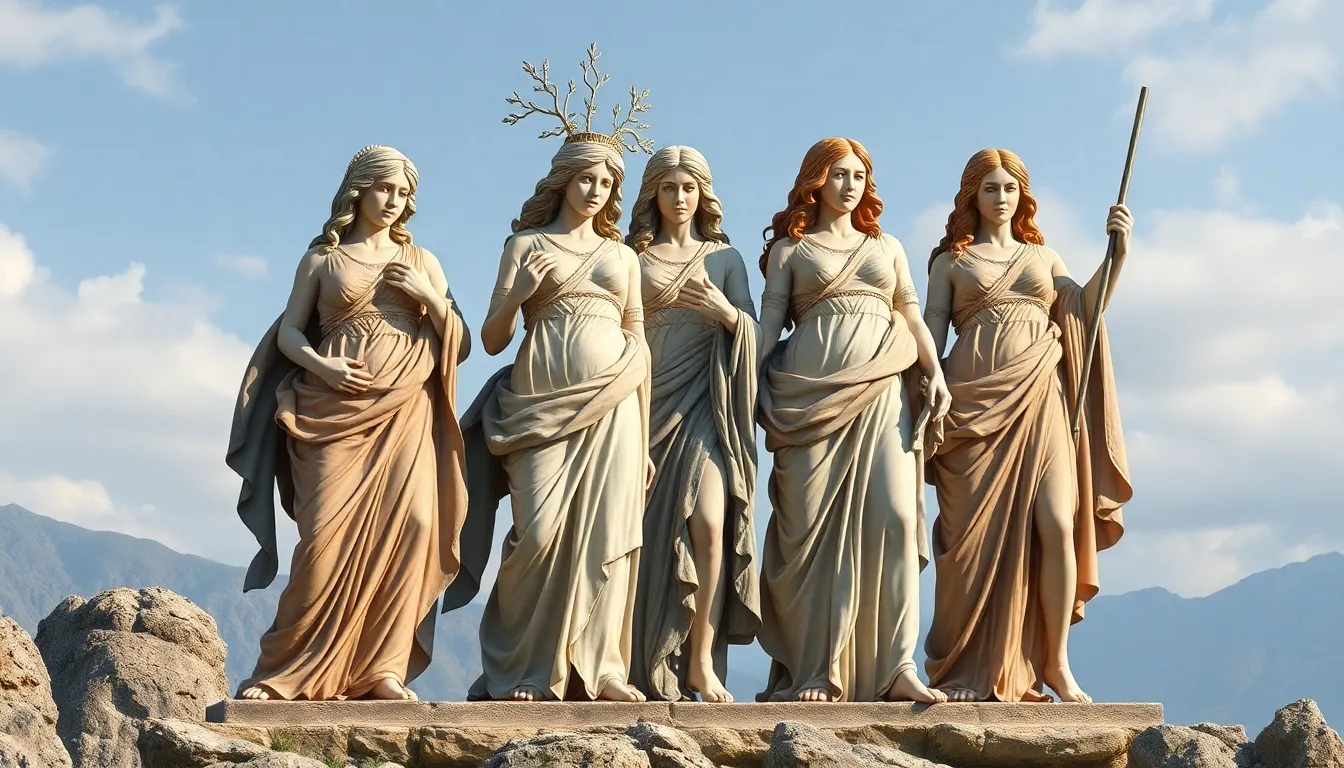The Muses as Personifications of Inspiration: A Psychological Analysis
I. Introduction
The Muses, in Greek mythology, are a group of goddesses who embody the arts and sciences, serving as sources of inspiration for artists, writers, and thinkers. Traditionally, there are nine Muses, each associated with a specific domain of human creation:
- Calliope – Epic Poetry
- Clio – History
- Erato – Lyric Poetry
- Euterpe – Music
- Melpomene – Tragedy
- Polyhymnia – Sacred Poetry
- Terpsichore – Dance
- Thalia – Comedy
- Urania – Astronomy
Inspiration, the act of being mentally stimulated to do or feel something, plays a crucial role in the creative process. This article aims to explore the psychological implications of the Muses as symbols of inspiration, examining their historical context, psychological framework, and relevance in contemporary creativity.
II. Historical Context of the Muses
The concept of the Muses originated in ancient Greece, where they were revered not only as divine figures but also as essential sources of knowledge and creativity. Initially, the Muses were considered to be the daughters of Zeus and Mnemosyne, the goddess of memory. Their portrayal evolved over time, influencing various aspects of art, literature, and culture.
Throughout history, the Muses have inspired countless artists, writers, and philosophers. From the epic poems of Homer to the Renaissance masterpieces, the Muses have been invoked as guiding spirits for creativity. Even in modern times, the idea of the Muse endures, reinterpreted in a variety of contexts:
- Literature: Authors such as Virginia Woolf and James Joyce have reflected on the influence of the Muses in their works.
- Visual Arts: Artists like Pablo Picasso and Frida Kahlo spoke of their Muses, often intertwining personal relationships with their creative output.
- Pop Culture: The Muses have appeared in films and music, demonstrating their lasting impact on contemporary narratives.
III. The Psychological Framework of Inspiration
In psychological terms, inspiration can be defined as a transient state that sparks creativity, prompting individuals to generate ideas and pursue artistic endeavors. This process is often influenced by various factors, including:
- Creativity: The ability to think outside the box and generate novel ideas.
- Motivation: Inner drives that compel individuals to engage in creative activities.
The connection between psychological states and artistic expression is profound. Various emotions—joy, sorrow, love, and anger—can ignite inspiration, leading to the creation of impactful art. Understanding how these psychological factors interplay with the Muses can deepen our appreciation of the creative process.
IV. The Muses as Archetypes in Jungian Psychology
Carl Jung’s concept of archetypes provides a framework for understanding the Muses as representations of universal patterns within the human psyche. Archetypes are innate, universal symbols that shape our experiences and creativity.
The Muses can be seen as:
- Representations of the collective unconscious: They embody deep-seated cultural and psychological themes related to creativity.
- Personal interpretations: Each individual may experience the Muses differently, identifying with specific Muses that resonate with their creative journey.
By exploring personal connections to the Muses, individuals can unlock unique pathways to creativity, enhancing their artistic expression.
V. The Role of the Muses in Modern Creativity
In contemporary artistic practices, the influence of the Muses persists. Many artists consciously or unconsciously draw upon the archetype of the Muse to fuel their creativity. Case studies of notable artists provide insight into this relationship:
- Vincent van Gogh often expressed the role of his Muse, who inspired his vibrant use of color and emotional depth.
- Leonardo da Vinci viewed the Muses as essential to his scientific and artistic inquiries, believing that inspiration came from engaging with the divine.
Psychological strategies for harnessing the Muse archetype include:
- Creating rituals to invoke inspiration, such as meditation or nature walks.
- Keeping a journal to document thoughts and feelings that may lead to creative insights.
VI. The Neuroscience of Inspiration
Recent advancements in neuroscience have shed light on the brain mechanisms associated with creativity and inspiration. Studies suggest that specific brain regions, such as the default mode network, are activated during creative thinking. This network is associated with:
- Daydreaming and mind-wandering: States often linked to moments of inspiration.
- Associative thinking: Connecting seemingly unrelated ideas to generate new concepts.
The alignment of the Muses concept with neuroscientific findings emphasizes the importance of both external and internal stimuli in the creative process. Recognizing the interplay between the brain’s functions and the Muses can enhance our understanding of inspiration.
VII. Critiques and Limitations of the Muse Concept
While the Muses symbolize inspiration effectively, there are critiques regarding the attribution of creativity solely to external sources. Some challenges include:
- The risk of romanticizing the creative process, overshadowing the hard work and discipline required for artistic achievement.
- Alternative theories of inspiration that emphasize intrinsic motivation and cognitive processes rather than external influences.
Understanding these critiques allows for a more nuanced view of creativity, acknowledging the complexity of the creative process beyond the Muses.
VIII. Conclusion
The Muses hold significant importance in understanding inspiration, serving as metaphors for the psychological and emotional aspects of creativity. By personifying inspiration, the Muses invite individuals to explore their inner landscapes, fostering personal connections to the creative process.
Reflecting on the psychological impact of the Muses enriches our understanding of artistic expression, demonstrating their relevance in contemporary discourse on creativity. As we navigate our creative journeys, the Muses continue to inspire, reminding us of the profound connection between art, inspiration, and the human experience.




